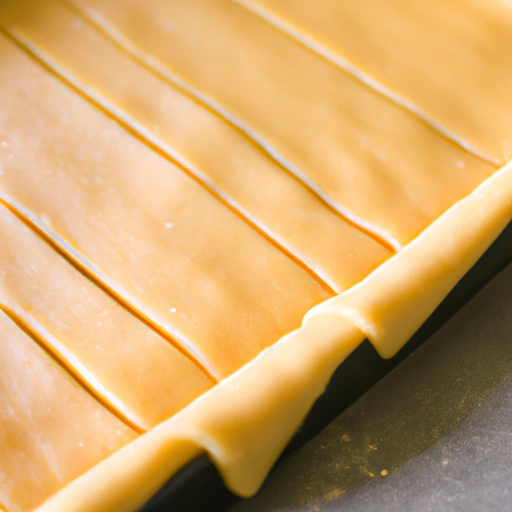Shortcrust Pastry
Description

Common uses
Shortcrust pastry is predominantly used as a base for various baked goods. Its versatility allows it to be adapted for both sweet desserts, like fruit pies and tarts, and savory dishes, such as quiches and meat pies. The pastry serves as a sturdy yet delicate vessel that holds the filling and retains its shape during baking.
Nutritional value
Calories
Shortcrust pastry is calorie-dense, with a typical 100g serving containing approximately 400-500 kcal (1673-2092 kJ) depending on the fat content used.
Protein
Protein content in shortcrust pastry is relatively low, with about 5-7g per 100g serving.
Fat
The fat content is significant due to the butter or shortening used, contributing to about 25-35g of fat per 100g serving.
Carbohydrates
Carbohydrates are present mostly in the form of starch from the flour, with a 100g serving containing around 45-55g.
Vitamins
Shortcrust pastry contains small amounts of B vitamins, particularly if made with enriched flour.
Minerals
Depending on the flour used, it may contain varying levels of minerals such as iron, calcium, and potassium.
Health benefits
While shortcrust pastry is rich in calories and fat, it can also provide some energy and nutrients when consumed in moderation. The butter or shortening used in the pastry can contribute to the intake of fat-soluble vitamins.
Potential risks
Due to its high-fat and calorie content, excessive consumption of shortcrust pastry can contribute to weight gain and associated health risks. It's advised to enjoy dishes made with shortcrust pastry in moderation as part of a balanced diet.
Common recipes
Popular recipes using shortcrust pastry include apple pie, lemon meringue pie, chocolate tart, quiche Lorraine, and steak and kidney pie.
Cooking methods
Shortcrust pastry is typically blind baked (pre-baked) before being filled, to prevent sogginess. It can also be baked with fillings for dishes like pies and tarts.
Pairing with other ingredients
Pastry pairs well with fillings such as custards, chocolate, fruits, meats, and cheeses, as well as herbs and spices to enhance flavor.
Summary
Shortcrust pastry is a foundational ingredient in the world of baking, prized for its versatility and ability to pair with a wide range of flavors. Though it should be consumed in moderation due to its high caloric content, it remains a beloved choice for creating both classic and innovative baked goods.